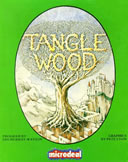
The Dragon 32 and Dragon 64 are home computers that were built in the 1980s. The Dragons are very similar to the TRS-80 Color Computer, and were produced for the European market by Dragon Data, Ltd., initially in Swansea, Wales before moving to Port Talbot, Wales and by Eurohard S.A. in Casar de Cáceres, Spain, and for the US market by Tano Corporation of New Orleans, Louisiana. The model numbers reflect the primary difference between the two machines, which have 32 and 64 kilobytes of RAM, respectively.

The Atari 8-bit computers, formally launched as the Atari Home Computer System, are a series of 8-bit home computers introduced by Atari, Inc., in 1979 with the Atari 400 and Atari 800. The architecture is designed around the MOS Technology 6502 CPU and three custom coprocessors which provide support for sprites, smooth multidirectional scrolling, four channels of audio, and other features. The graphics and sound are more advanced than most of its contemporaries, and video games are a key part of the software library. The 1980 first-person space combat simulator Star Raiders is considered the platform's killer app.
Microsoft BASIC is the foundation software product of the Microsoft company and evolved into a line of BASIC interpreters and compiler(s) adapted for many different microcomputers. It first appeared in 1975 as Altair BASIC, which was the first version of BASIC published by Microsoft as well as the first high-level programming language available for the Altair 8800 microcomputer.
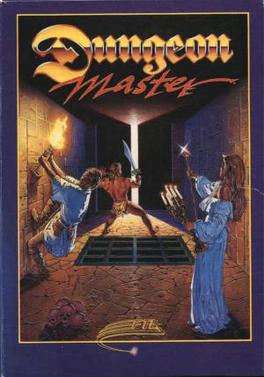
Dungeon Master is a role-playing video game featuring a pseudo-3D first-person perspective. It was developed and published by FTL Games for the Atari ST in 1987, almost identical Amiga and PC (DOS) ports following in 1988 and 1992.

One on One: Dr. J vs. Larry Bird, commonly known as One on One, is a basketball video game written by Eric Hammond for the Apple II and published by Electronic Arts in 1983. It was initially ported to the Atari 8-bit computers, ColecoVision, Commodore 64, and IBM PC compatibles. Versions followed for the TRS-80 Color Computer, Classic Mac OS, Amiga, and ZX Spectrum. In Europe, the publisher was Ariolasoft. Atari Corporation released an Atari 7800 port in 1987.

Sea Dragon is a horizontally scrolling shooter for the TRS-80 computer written by Wayne Westmoreland and Terry Gilman and released in 1982 by Adventure International. The gameplay is similar to the Scramble arcade video game, but underwater. It was ported to the Apple II, Atari 8-bit computers, Commodore 64, TRS-80 Color Computer, and MS-DOS.

Time Bandit is a maze shoot 'em up written for the TRS-80 Model I by Bill Dunlevy and Harry Lafnear and published by MichTron in 1983. It was ported to the TRS-80 Color Computer and Dragon 32, but enjoyed its greatest popularity several years later as an early release for the Atari ST. It was also released for the pseudo-PC-compatible Sanyo MBC-55x with 8-color display. Amiga and MS-DOS versions were ported by Timothy Purves.
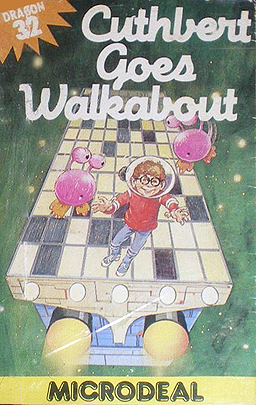
Cuthbert Goes Walkabout is a maze video game written by Steve Bak for the Dragon 32/64 and published by Microdeal in 1983. A TRS-80 Color Computer port was released in the same year. Versions for the Atari 8-bit computers and Commodore 64 followed in 1984. The game features the character Cuthbert. The game is based on the Konami arcade game Amidar.
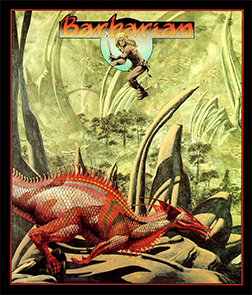
Barbarian is a 1987 platform game by Psygnosis. It was first developed for the Atari ST, and was ported to the Amiga, Commodore 64, MS-DOS, MSX, Amstrad CPC, and ZX Spectrum. The Amiga port was released in 1987; the others were released in 1988. The cover artwork is by fantasy artist Roger Dean.

Microdeal was a British software company which operated during the 1980s and early 1990s from its base at Truro Road in the town of St Austell, Cornwall. The company, founded by John Symes was one of the major producers of games and other software for the 8-bit home computers of the time, in particular the Dragon 32 and the similar Tandy TRS-80 Color Computer ("CoCo").

Airball is a video game released in 1987 by Microdeal. It was programmed by Ed Scio, with graphics by Pete Lyon, music by Paul Shields, and level design by Pete Scott. Lyon was the artist for other Microdeal games in the late 1980s, such as Goldrunner. The game was released for the Dragon 32/64 and TRS-80 Color Computer, with ports following for the Atari ST, Amiga, MS-DOS, Atari 8-bit computers, and Game Boy Advance. A port to the Apple IIGS sold fewer than 150 copies. A version for the Nintendo Entertainment System from Novotrade and Tengen was cancelled.

Temple of Apshai Trilogy is a remake of three games from the Dunjonquest series, Temple of Apshai, Upper Reaches of Apshai, and Curse of Ra.
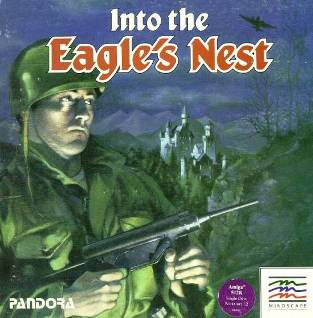
Into the Eagle's Nest is a video game developed by Pandora and published for Amiga, Amstrad CPC, Apple II, Atari 8-bit computers, Atari ST, Commodore 64, IBM PC compatibles, and ZX Spectrum starting in 1987.
Addictive Games was a UK video game publisher in the 1980s and early 1990s. It is best known for the Football Manager series of games created by company founder Kevin Toms. The company was originally based in Milton Keynes, England, and later relocated to Bournemouth, in southern England.

Falcon is a combat flight simulator video game and the first official entry in the Falcon series of the F-16 jet fighter's simulators by Spectrum HoloByte. Originally developed by Sphere for Macintosh and MS-DOS in 1987 and ported to several platforms between 1988 and 1992, the game earned commercial success and critical acclaim.
Peter Michael Lyon is a UK-based visual artist who has worked in a wide range of 2D and 3D media spanning from traditional oil painting to computer graphics, for the science fiction and fantasy genres. According to his personal website, he has been involved in various works in the computer games industry such as graphic production, teaching and management, with 3D modelling and animation. He is known as a pioneer graphic designer for the Atari and the Amiga in the 1980s and 1990s.

Ninja is a beat 'em up game developed by Sculptured Software and released by Mastertronic in 1986 for the Atari 8-bit computers, Commodore 64, and ZX Spectrum, then in 1987 for the Amstrad CPC, Amiga, Atari ST, and MS-DOS. An arcade version of the game was released in 1987 for Mastertronic's Arcadia Systems which is based on Amiga hardware. The Amiga, Atari ST, and Arcade versions were released as Ninja Mission. As a Ninja, the player attacks a fortress made of individual fixed screens which can be explored non-linearly.
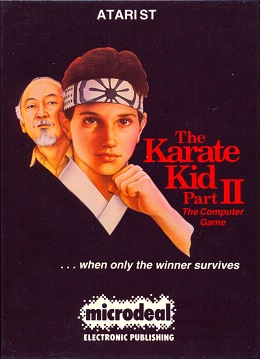
The Karate Kid Part II: The Computer Game is a fighting game based on the 1986 film The Karate Kid Part II. It was initially released for the Atari ST in 1986, and an Amiga port was published in 1987. It was published by Microdeal in Europe and the United States, and by Ozisoft in Australia.

Danger Ranger is a non-scrolling platform game designed by Ken Kalish and published in 1983 by Microdeal for the Dragon 32/64 and TRS-80 Color Computer. The game was ported to the Atari 8-bit computers and Commodore 64 by Rita Jay in 1984.
